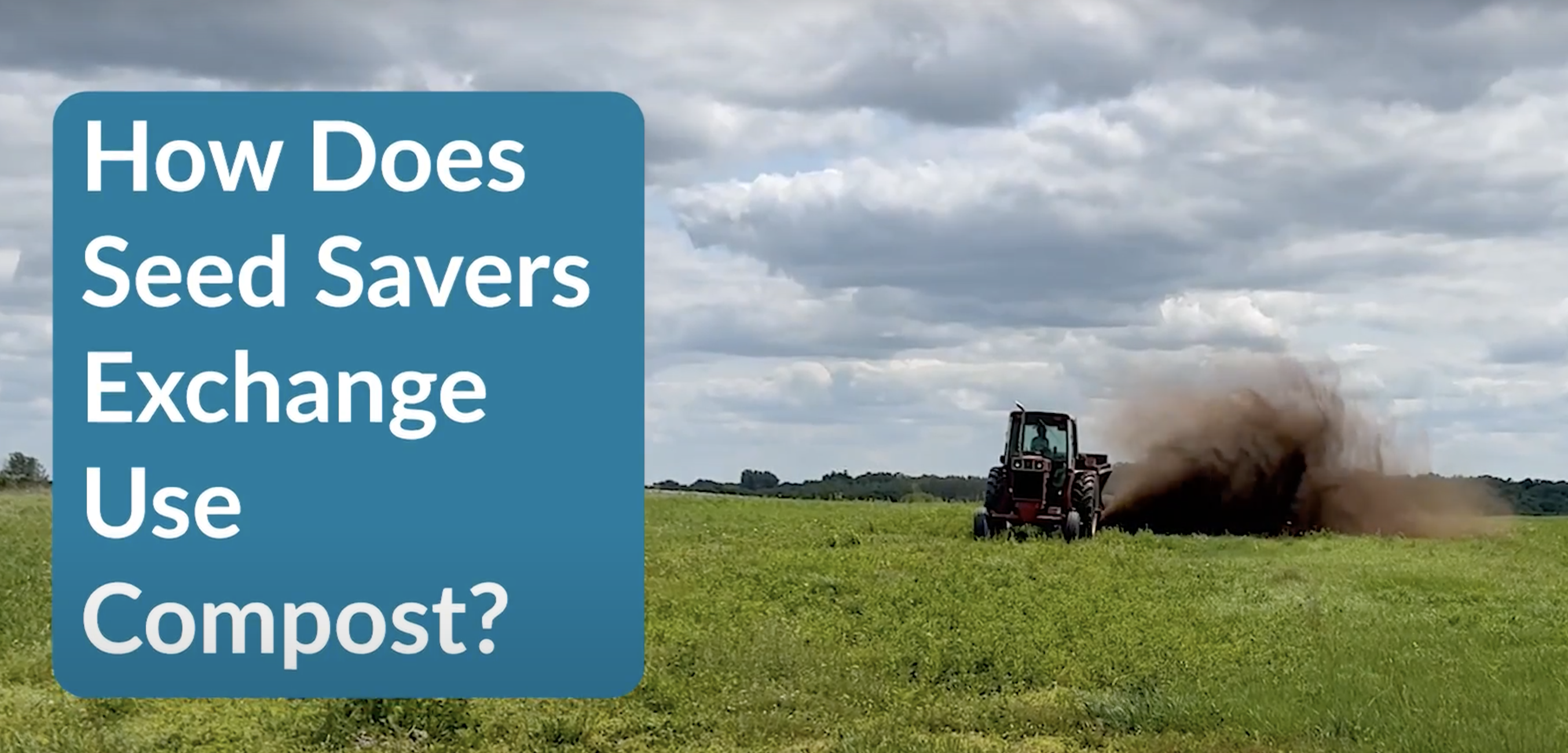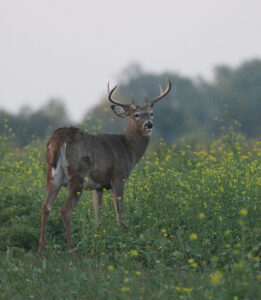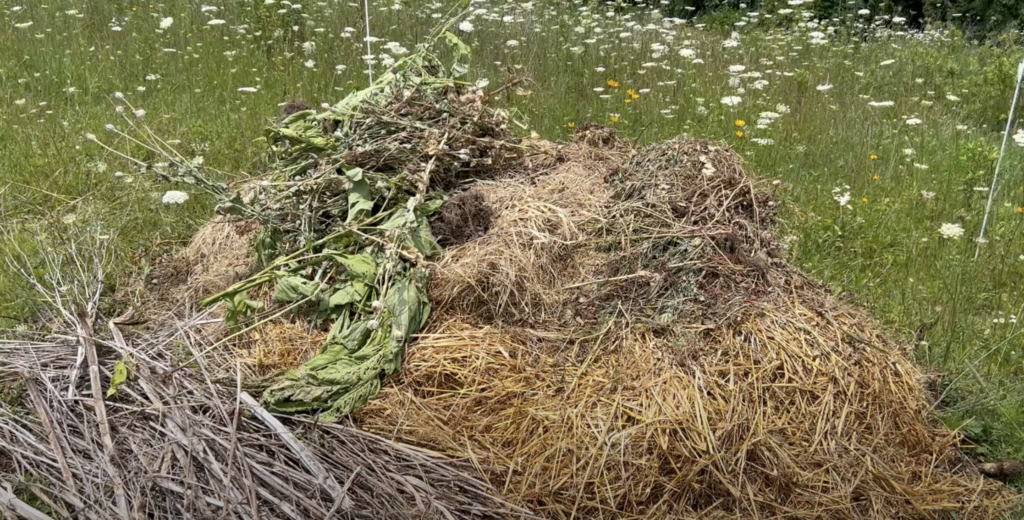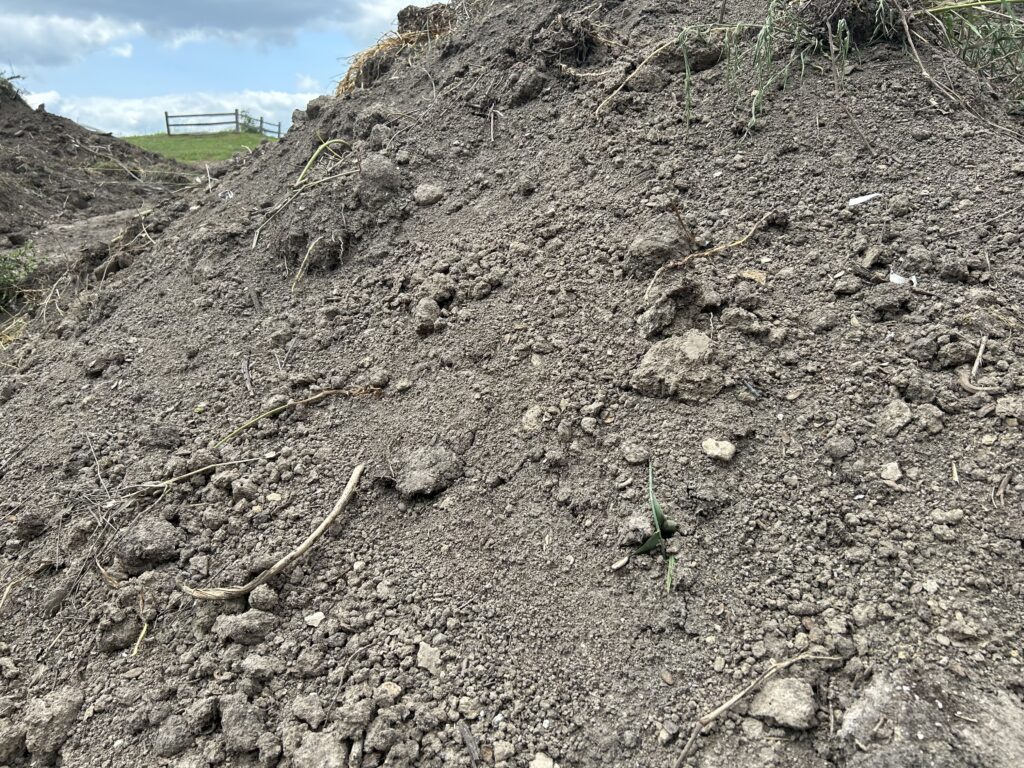Related Links
Composting at Seed Savers Exchange

Composting to Maintain Soil Health
Composting is great for the environment and waste management, and it can be beneficial for the garden as well! Compost improves soil health by
- increasing water availability to the soil
- adding nutrients, reducing the need for fertilizer
- helping with disease suppression
You can combine composting with other methods of improving soil, such as rotating crops and planting cover crops.
One way that Seed Savers Exchange uses compost is to fertilize soil for cover crop planting. Our field crew plants cover crops over unused fields in the fall to act as a ground cover. Cover crops maintain and improve long-term soil health.
Cover crops also
- reduce tillage
- sequester carbon
- increase water infiltration
- feed soil biology
- slow erosion
- outcompete weeds
- increase biodiversity
- help control pests and diseases

This magnificent buck is standing in a field of cover crops including mustard, buckwheat, rye, and clover. These crops were planted to add nutrients to and regenerate the soil where Seed Savers Exchange grew garlic this year from the Collection.
At the end of the season, the SSE field operations team will turn over these crops adding nutrients back into the soil to support next spring’s planting.
Composting at Seed Savers Exchange
Watch “How does Seed Savers Exchange Use Compost?”—Join Brennan Allsworth, SSE field operations technician, as he spreads compost on to Heritage Farm fields.
SSE collects organic matter from compost bins in the administrative buildings and waste from the gardens to create compost at the farm. We then layer this organic matter (or green matter) with straw (a type of carbon matter, or brown matter) in large piles. Over time, microorganisms break down these materials, which turn into compost.

It’s a long process of microorganisms eating down all that material to turn into a new humus which we return to the soil.
field operations technician / Seed Savers Exchange
Finished compost looks a lot like soil, but is more fine, and smells rich and earthy. Compost is very nutrient-dense because it is created with a high proportion of organic material to carbon material. Using compost in gardening and farming directly delivers these nutrients to the soil and the crops that grow there.
Once these materials break down completely, the resulting compost can be applied to the soil. For larger fields, SSE uses a manure spreader to apply compost. The manure spreader moves compost towards a shoot at a slight slope using two large, spinning augers. The movement of these augers casts the compost out the shoot and onto the fields. The manure spreader is capable of casting material up to 20-40 yards away.
In August, Brennan began transporting and distributing large amounts of compost into fields for future seed production.

To transport the compost, Brennan first used a tractor with a front-end bucket to scoop up the completed compost in large amounts. This tractor then dumped the compost into the box of the manure spreader.
Then, Brennan used another tractor to haul the compost to the fields. From there, Brennan activated the manure spreader—which began to spin its two augers to push the compost out of a shoot and onto the field—and drove alongside the field to cover every inch of soil. Once the manure spreader was empty, the process repeated!

After Brennan covered this field with compost, the SSE field crew planted fall cover crops to further protect and enrich the soil. At the end of the season, these crops will be turned over into the soil. Microorganisms from the soil will then start to break down the organic material from the crops, starting the compost transformation process again to return the nutrients from the crops back to the soil.
By combining these two soil-improvement practices (using compost and cover crops), SSE supports its soil health and improves the performance of the crops of next season.